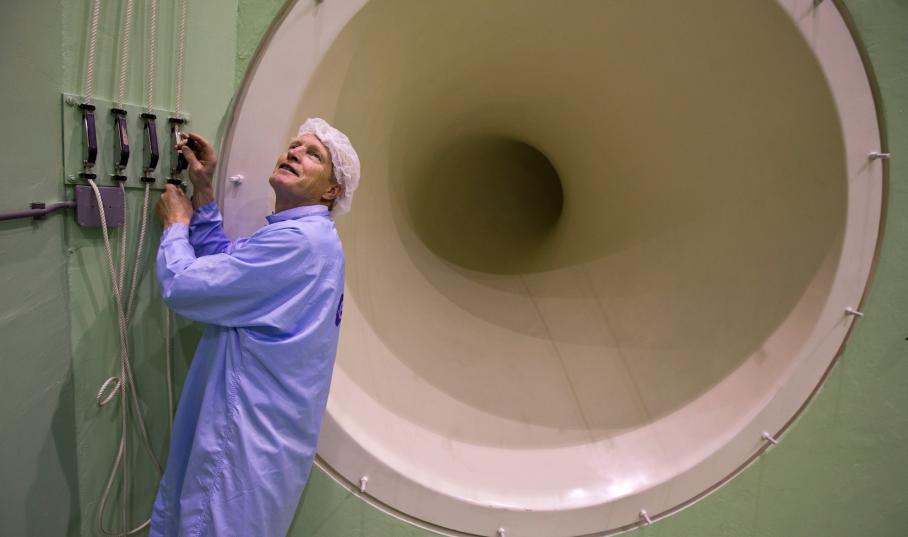|
fiogf49gjkf0d
This looks a bit like a giant ear canal, but in a way, it's the
opposite. It's the largest horn in the most powerful sound system in
Europe. The system's maximum output, according to the European Space
Agency, would kill any human exposed to it.
The horn is part
of the European Space Agency's Large European Acoustic Facility in
Noordwijk, the Netherlands. The facility blasts sound at spacecraft
components to test whether they're able to withstand the intense noise
of launch. There are four horns, to create sounds in a range of
frequencies. ESA engineers send nitrogen gas through the horns to create
noise of more than 154 decibels.
Whether that's enough to
literally kill is unclear. (There are so many variables. Did the agency
mean "kill you on contact" or "kill you if you're sealed inside the
facility for a while"?) At the very least, it would cause some serious
damage. The eardrums rupture at around 150 decibels. The lungs rupture at around 200 decibels.
For
safety, the facility has half-meter-thick walls made of
steel-reinforced concrete coated inside with epoxy resin, which reflects
noise into the chamber. It also won't operate unless all of its doors
are closed.

http://www.popsci.com/article/technology/big-pic-sound-system-thats-loud-enough-kill?src=SOC&dom=tw
Regards
Corallus
|